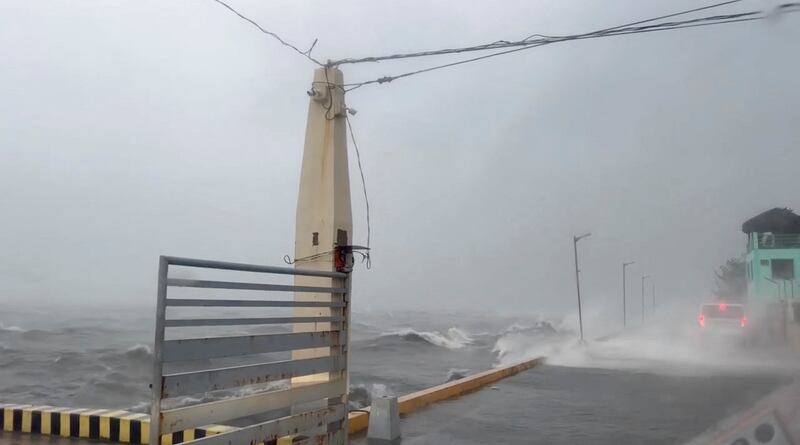A super typhoon made landfall in Quezon province on Luzon, the Philippines’ most populous island, on Sunday, leading to evacuations in coastal areas and the capital Manila before feared storm surges.
The last super typhoon to hit the Philippines was Typhoon Rai, which killed nearly 500 people in south-east Asia — also hitting Vietnam — and caused damage estimated at about $1 billion after gusts of wind reached 270 kilometres per hour in some areas.
Super Typhoon Noru featured maximum sustained winds of 195 kilometres an hour after an “explosive intensification”, the state weather forecaster said.
The storm, the strongest to hit the Philippines this year, is expected to continue strengthening in the evening.
“We ask residents living in danger zones to adhere to calls for evacuation whenever necessary,” Philippine National Police chief Gen Rodolfo Azurin said.
The Philippines is regularly ravaged by storms, with scientists saying that they will become more powerful as the world gets warmer because of climate change.
“The winds were fierce this morning,” said Ernesto Portillo, 30, who works as a cook in the coastal municipality of Infanta in Quezon province.
“We're a bit worried … we secured our belongings and bought a few groceries so we have food just in case.”
Weather forecaster Robb Gile said Noru's rapid intensification as it neared land was unprecedented. The meteorology agency said its wind speeds had increased by 90 kilometres an hour in 24 hours.
“Typhoons are like engines — you need a fuel and an exhaust to function,” Mr Gile said.
“In the case of Karding, it has a good fuel because it has plenty of warm waters along its track and then there is a good exhaust in the upper level of the atmosphere ― so it's a good recipe for explosive intensification,” he said. Karding is the local name for the storm.
In Manila, emergency personnel braced for the possibility of strong winds and heavy rain battering the city of more than 13 million people.
Forced evacuations have started in some high risk areas of the metropolis, officials said.
“NCR is prepared. We are just waiting and hoping it will not hit us,” said Romulo Cabantac, regional director for the civil defence office, referring to the national capital region.
Before the latest storm, residents in several municipalities in Quezon province were moved from their homes, according to the provincial disaster office.
In the neighbouring province of Aurora, residents of Dingalan municipality were forced to seek shelter.
“People living near the coast have been told to evacuate. We live away from the coast so we're staying put so far. We're more worried about the water from the mountains,” said Rhea Tan, 54, a restaurant manager in Dingalan.
Ms Tan said residents were securing the roofs of their houses and boats were being taken to higher ground while the weather was still calm.
“We're even more anxious if the weather is very calm, because that's the usual indicator of a strong typhoon before it hits land,” she said.






